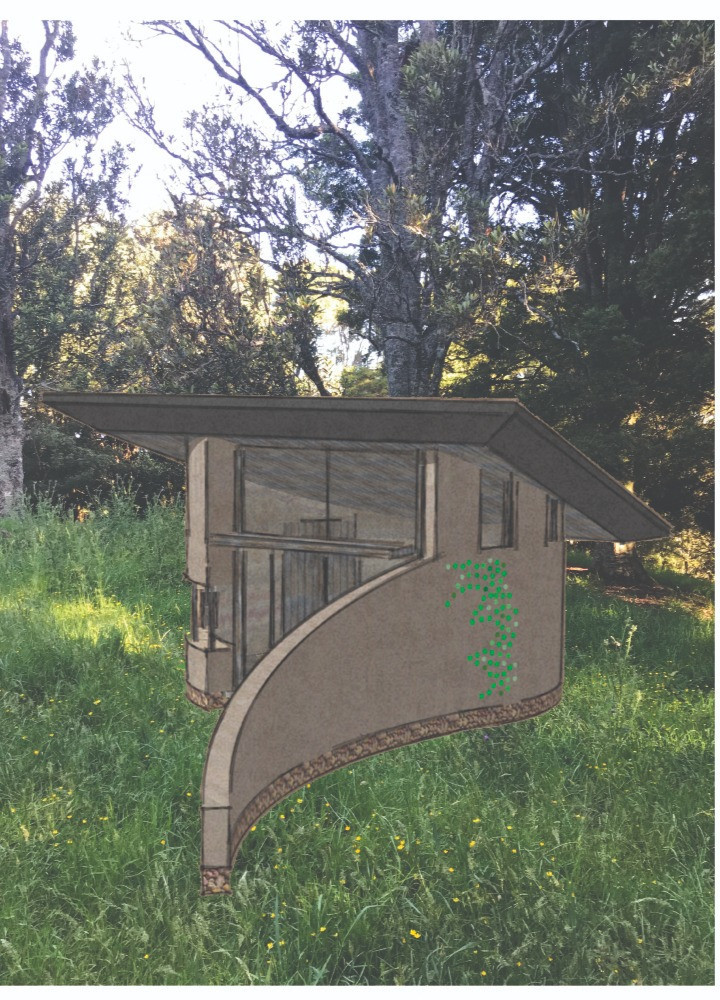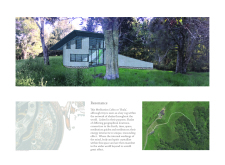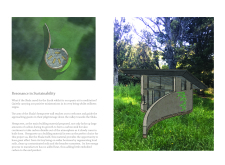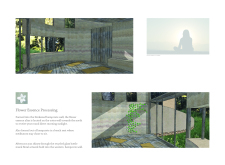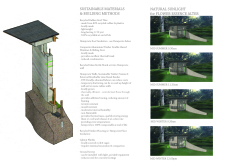5 key facts about this project
The Meditation Cabin, known as the Shala, serves a unique purpose in promoting mindfulness and self-reflection. Located in a natural environment, the Shala is designed to create an intimate connection between its occupants and the surrounding landscape. The design concept focuses on enhancing the experience of meditation while integrating sustainable practices into its structure.
Sustainable Materials
Hempcrete is the main material used in the construction of the Shala. This material behaves as a carbon sink, absorbing carbon dioxide during the growth of the hemp plants and continuing to do so as it cures. This makes hempcrete an effective choice for maintaining a reduced carbon footprint. Its thermal properties also contribute to energy efficiency within the cabin.
In addition to hempcrete, the project features recycled glass bottles as part of a mural floral artwork set into the western wall. This adds visual interest to the structure while aligning with sustainability goals. The roof is made with recycled rubber tiles, composed of 80% recycled materials. Such choices reflect a thoughtful approach to material selection, ensuring minimal impact on the environment.
Architectural Layout
The layout of the Shala is intended to create a welcoming atmosphere for visitors. An extended entrance leads guests toward the cabin, guiding them on their journey from the outside world into a peaceful space for meditation. This approach encourages users to leave behind distractions and immerse themselves in contemplation.
Inside, the design includes a flower essence altar positioned to catch natural sunlight throughout the day. This detail not only enriches the meditative experience but also connects the interior to the outside environment. The inclusion of seating allows users to comfortably engage with their thoughts and surroundings, deepening their experience in this tranquil setting.
The combination of these elements creates a space focused on well-being and environmental respect. The Shala stands as a thoughtful structure where meditation and sustainability come together, supporting both personal reflection and ecological awareness. The design’s straightforward features allow occupants to engage fully with their practices while fostering a sense of harmony with nature.


